Is New York City facing a ‘doom loop’ scenario? A discussion has started.
Jan. 2, 2023, 5:01 a.m.
Under this bleak view, Manhattan office workers' continued hybrid and work-from-home arrangements will depress real estate values, starve the government of tax revenue and result in budget cuts and policy decisions that fuel more harm.
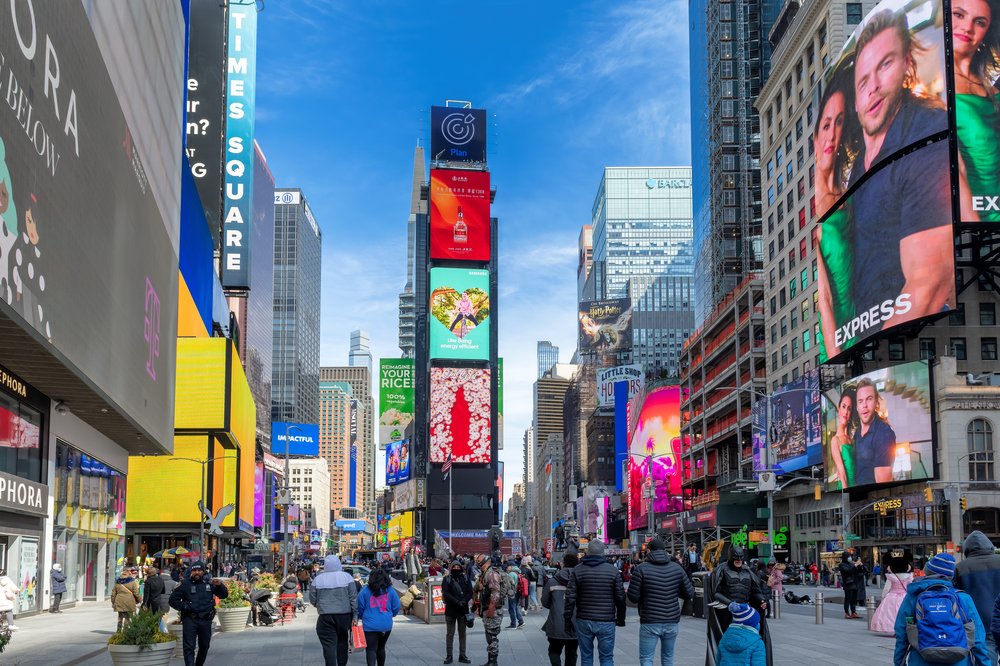
A little after 10 a.m. on a recent morning, Joseph Bowen took a break from working at home to send his wife a quick text message. She was just around the corner from their Jackson Heights apartment, meeting a friend at the K&L Deli. “If you’re having coffee there, can you pick me up a red eye on your way home?” he wrote.
In pre-pandemic times, Bowen would have been in the West Village, having traveled to his office tech job. He might have bought coffee or breakfast near work, then picked up a $10-$12 lunch from a cart. Now that cash is more likely to be spent near his home in Queens, and the commuter money he previously handed over to the MTA stays in his pocket.
There, in a nutshell, is one of the major questions facing New York at the start of 2023: When will Midtown and Lower Manhattan, long the beating heart of the nation’s largest commercial business district, fully win back office workers like Bowen, who is among the 50% of Manhattan office workers who work from home on any given day? Or is this the new normal – as it has long been for Bowen's wife Lila Stromer, who has been working from home for years?
The answers, according to policy analysts, academics and others, have major implications on city revenues and budgets, employment, business bottom lines, public transportation funding, real estate and housing, as well as homelessness and public health policy. And how the government responds could determine if New York City enters what some academics describe as an “urban doom loop” – a cycle of decline tied to tax revenue losses and spending cuts.

Gov. Kathy Hochul and Mayor Eric Adams acknowledged the challenge ahead in a little-noticed report unveiled on Dec. 15. Their “New” New York report concluded that “hybrid is here to stay.” It sets forth 40 proposals for a post-pandemic metropolis where hybrid and work-from-home arrangements are the norm. Their report notes, “After inching up steadily for several months, NYC office attendance has started to stabilize just shy of 50% of pre-pandemic levels.”
Other key markers it references: In November, overall subway use averaged 62% of pre-pandemic levels, and bus use averaged 64%; foot traffic in Midtown was at 77% of pre-pandemic levels in September, and 82% in Lower Manhattan. As of the fall, the vacancy rate for direct and sublet office real estate stood at nearly 22%, the highest since the mid-1970s.
"We are no longer living in the same New York as we were at the beginning of the pandemic,” Hochul said in a statement accompanying the report, “and these proposals will help to revitalize our business districts, ease New Yorkers' commutes, promote equity and tackle our 800,000-unit housing shortage.”
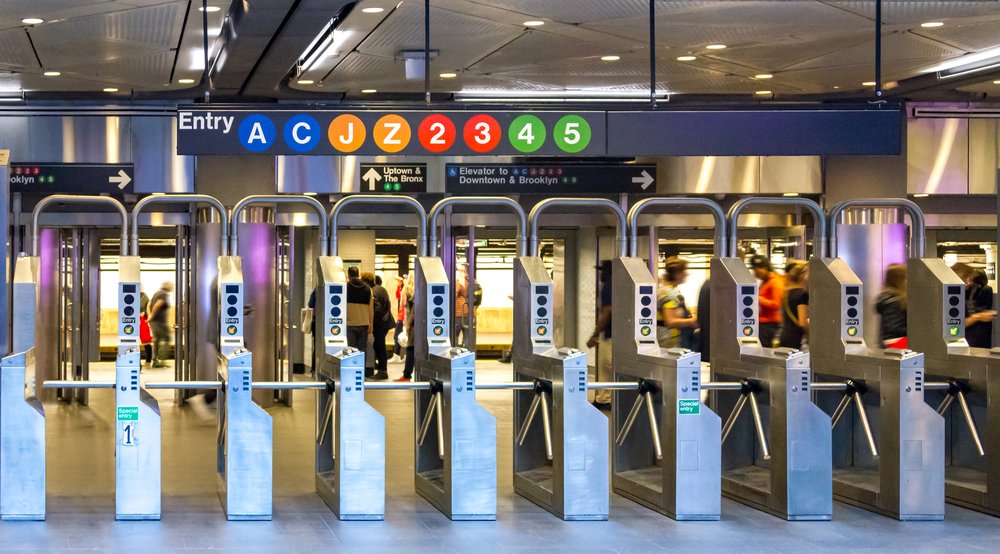
Their action plan called for broad and mostly loosely defined policy fixes aimed at making the city’s core business districts more attractive to workers than their home offices. According to the report, that includes making commuting easier, fighting crime and improving perceptions of safety, building more affordable housing and mixed-use developments, and creating more jobs that are accessible to a broader spectrum of people. Together the measures seek to further the aim of turning struggling Midtown and Lower Manhattan into areas “where people live, work and play 24/7.”
We are no longer living in the same New York as we were at the beginning of the pandemic, and these proposals will help to revitalize our business districts, ease New Yorkers' commutes, promote equity and tackle our 800,000-unit housing shortage.
Gov. Kathy Hochul
The report acknowledges the stakes are high, and not only for the city.
“The significance of Midtown and Lower Manhattan resonates beyond the city,” the report notes. “Before the pandemic, Manhattan welcomed 664,000 regional commuters per day on average — the majority in Midtown, Midtown South, and Lower Manhattan. These commuters, if they work from home, may spend their dollars in other states.”
The ‘urban doom loop’
Academics are already taking up what the future holds for New York City, against a backdrop of so many workers continuing to stay home on any given day.
An upcoming address by Columbia Business School real estate and finance professor Stijn Van Nieuwerburgh, to be delivered before the American Real Estate and Urban Economics Association in January, paints a bleak picture. His working paper for the talk was recently highlighted in an article by New York Times columnist Thomas Edsall. It warns of an “urban doom loop” spurred by the sudden, pandemic-induced shift to hybrid work and work-from-elsewhere.
The “doom” Van Nieuwerburgh describes stems from loss tax revenues and fees to local governments, declining revenues for public transportation, and losses associated with having fewer high-income people and firms in urban centers. He writes: “Tax rates and spending cuts would need to be larger still, prompting further outmigration. This urban doom loop would result in a municipal fiscal crisis. NYC experienced such a crisis in the 1970s, Detroit more recently.”
The worry is that the enormous decline in people coming to the office may soon create a big shortfall in property tax revenue, and that this will necessitate spending cuts in the very things that make New York so appealing, from the transit system and culture to sanitation and safety. And if that happens, that's not good news for New York.
Jonathan Bowles, the executive director of Center for an Urban Future
Van Nieuwerburgh wrote that academics of all stripes will be studying the “remote work revolution for years to come,” which he concludes will have profound implications on where people live, what real estate is used, transit patterns and the environment.
“The worry is that the enormous decline in people coming to the office may soon create a big shortfall in property tax revenue,” Jonathan Bowles, the executive director of Center for an Urban Future, said in an interview, “and that this will necessitate spending cuts in the very things that make New York so appealing, from the transit system and culture to sanitation and safety. And if that happens, that's not good news for New York.”
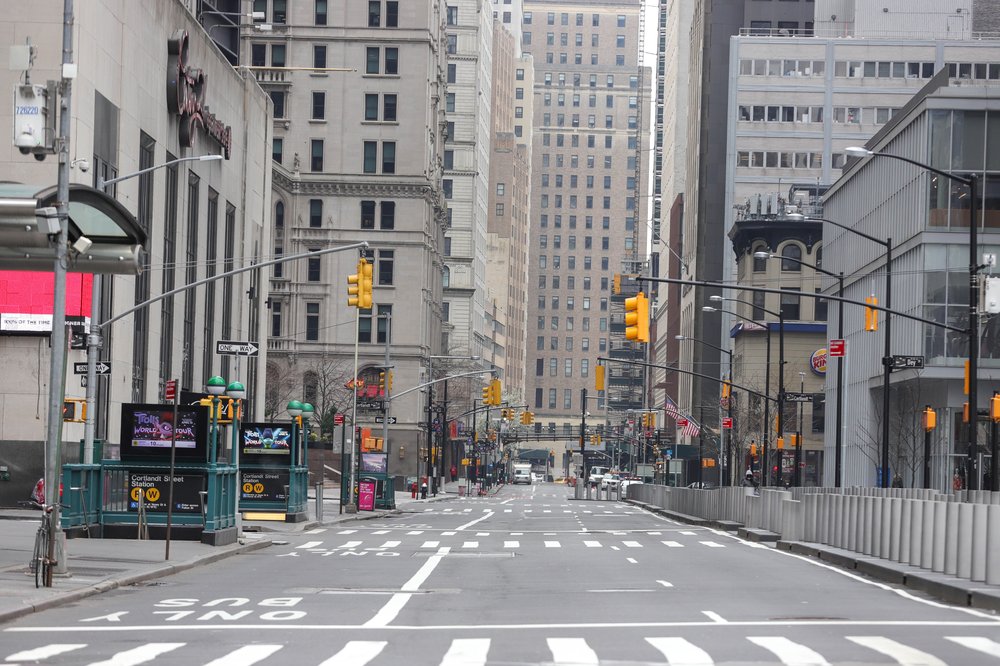
The Hochul and Adams report tallies up some of the looming fiscal costs: “Each additional day per average week that regional commuters work from home could result in as much as a $1.6 billion reduction in annual spending on daytime items (lunch, after-work drinks, etc.), and each additional day that NYC residents work from home … could result in a $0.7 billion to $1 billion reduction in annual revenue for major transportation providers, including the MTA and car/taxi cabs, which are the lifeblood of the region’s economy.”
Some headwinds are already being felt. A November letter from Jacques Jiha, director of the Mayor’s Office of Management and Budget, noted a $2.9 billion budget gap for fiscal year 2024 and “substantial new costs” stemming from negotiations with municipal labor unions.
“Furthermore,” Jiha wrote to his staff, “the local and national economies are weakening, financial market performance is down, and we face rising health care costs, high energy prices, and elevated inflation.” The letter did not mention hybrid or work-from-home arrangements.
And last week, members of the City Council spoke out against hundreds of millions of dollars in spending cuts proposed by the Adams administration, mostly to nonprofits.
“Every dollar I have allocated keeps the community safe, keeps it clean,” Councilmember Gale Brewer of Manhattan said during a Council meeting.
An ‘overblown’ scenario
But not everybody is feeling apocalyptic.
“The ‘doom loop’ scenario is overblown,” Richard McGahey, an economist and author of Unequal Cities, said in an interview. He also addressed the issue in a December column in Forbes.
He noted that New York has faced tough economic challenges before and bounced back. Look no further than the 9/11 attacks. He said that Lower Manhattan has seen substantial residential growth in the last two decades, after being written off by some.
Andrea Shapiro, the director of programs and advocacy at the Met Council on Housing, says some of the discussion has been self-serving.
The ‘doom loop’ scenario is overblown.
Richard McGahey, an economist and author of Unequal Cities
“There has been a disconnect between our political system and our housing crisis for a long time,” Shapiro said,” where our politicians listen to the real estate lobby, which is always predicting the downfall of New York City. ‘Rent regulations are gonna destroy New York. Eviction moratoriums will destroy New York.’”
She added: “We've had rent stabilization for over 40 years at this point. We haven't destroyed New York.”
Already, though, an intertwined debate over crime, urban decay and homelessness has had political consequences, with Republicans in big blue New York and California both making gains during the midterm elections, helping to flip the House of Representatives in the GOP's favor. In both states, Republicans focused on crime and street homelessness, particularly in Democrat-controlled cities, including New York City and Los Angeles.
Some advocates say talk of the “doom loop” is alarmist and could affect the city’s most vulnerable residents, such as those experiencing homelessness, who are more visible when they line sidewalks that used to be clogged with office workers, fueling fears that such public places are unsafe and giving remote workers another reason to stay away.
Jacquelyn Simone, the policy director at the Coalition for the Homeless, said the “doom loop” discourse wrongly frames homelessness as a “quality of life issue” for office workers.
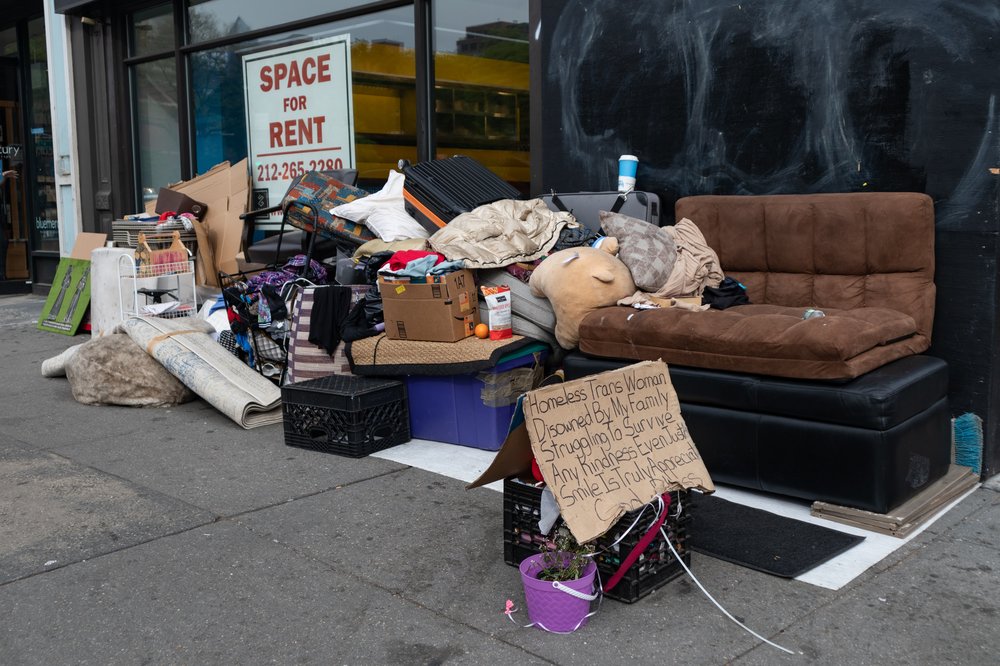
“If elected officials and business leaders misdiagnose the problem as the visibility of homelessness rather than the existence of homelessness, the policy solutions that they will advocate for and implement are going to be misguided,” said Simone, “and they're going to focus more on pushing homelessness out of sight rather than addressing the root causes of why thousands of people feel they have no better place to go than the streets and subways.”
Adams recently announced stepped-up efforts to remove people from public spaces and take them — involuntarily, if necessary — to hospitals or psychiatric facilities for evaluation if they exhibit signs of being unable to attend to their basic needs. He earlier announced steps to dismantle encampments for homeless people and to keep them from sheltering in the subways.
Researcher Tracy Loh of the Brookings Institution said the drop in the population of office workers caused what could be described as a perception issue.
“Unsheltered homelessness, even in places where it's decreased statistically, has in some cases just become more physically visible because there are now vacant storefronts,” Loh said. “There are vacant seats on transit.”
Unsheltered homelessness, even in places where it's decreased statistically, has in some cases just become more physically visible because there are now vacant storefronts. There are vacant seats on transit.
Tracy Loh, researcher at the Brookings Institution
But fairly or not, City Comptroller Brad Lander said, perceptions had the potential to drive the city’s economic outlook.
“People's sentiments matter in the economy for sure,” Lander said. “Inflation expectations can lead to more inflation. Fear can lead people not to come see a Broadway show, and then the Broadway show closes.”
Reimagining New York
New York isn’t alone in this fight.
Nationwide, one study in November based on foot traffic outside of office buildings found that office occupancy has “stalled” at around 60% in recent months, reflecting an average of three office visits per week per employee. That same study, the well-regarded Placer.ai Office Index, found New York had fared better in its recovery than San Francisco, Chicago and Los Angeles.
In September, the Partnership for New York City released the results of a survey of major employers that found 49% of office workers went to work on an average workday, with the figure expected to hit 54% by January. Just 9% of Manhattan office workers are in the office full time – that is, five days a week.
In a paper published in November, titled “Work From Home and the Office Real Estate Apocalypse,” Arpit Gupta of NYU’s Stern School of Business and Vrinda Mittal and Van Nieuwerburgh of Columbia argue that “remote work is shaping up to massively disrupt the value of commercial office real estate in the short and medium term.”
They noted that the “contractual occupancy rate in Manhattan, the country’s largest office market, was at a 30-year low of 78.5% in the second quarter of 2022,” due in large part to work-from-home practices. They predicted that if work from home remained the norm in the corporate world, office values in 2029 would be 60% below their values in 2019, just before the pandemic.
The subsequent impact on the city’s budget would be profound, they noted, given that “the share of real estate taxes in NYC’s budget was 53% in 2020, 24% of which comes from office and retail property taxes.”
But beyond the big “if” of whether work from home remains fully in place, critics argue that those projections ignore important realities, including the possibility of converting current office space into something else.
“Those buildings have a lot of value and the land they sit on has a lot of value and they could be repurposed for housing,” McGahey told Gothamist. “That's not easy to do, but it can be done.”
Lessons after 9/11
As recounted in an ongoing exhibition at the Skyscraper Museum, “Residential Rising: Lower Manhattan since 9/11,” there were 39,000 residents of Lower Manhattan in 2000, the year before the Sept. 11, 2001 attacks. That figure has more than doubled to 82,000.
“In the wake of 9/11,” the exhibition notes, “Lower Manhattan faced daunting challenges of rebuilding and reinvention that were met through adaptive reuse, government incentives for density, and valuing historic preservation, as well as new construction – a hopeful model of transformation for our COVID-recovery era.”
The availability of office space today has prompted Silverstein Properties to create a $1.5 billion fund for converting offices into residential properties in New York, San Francisco and other cities. Policy analysts say New York faces a housing shortfall of 227,000 units, and needs 560,000 units by 2030.
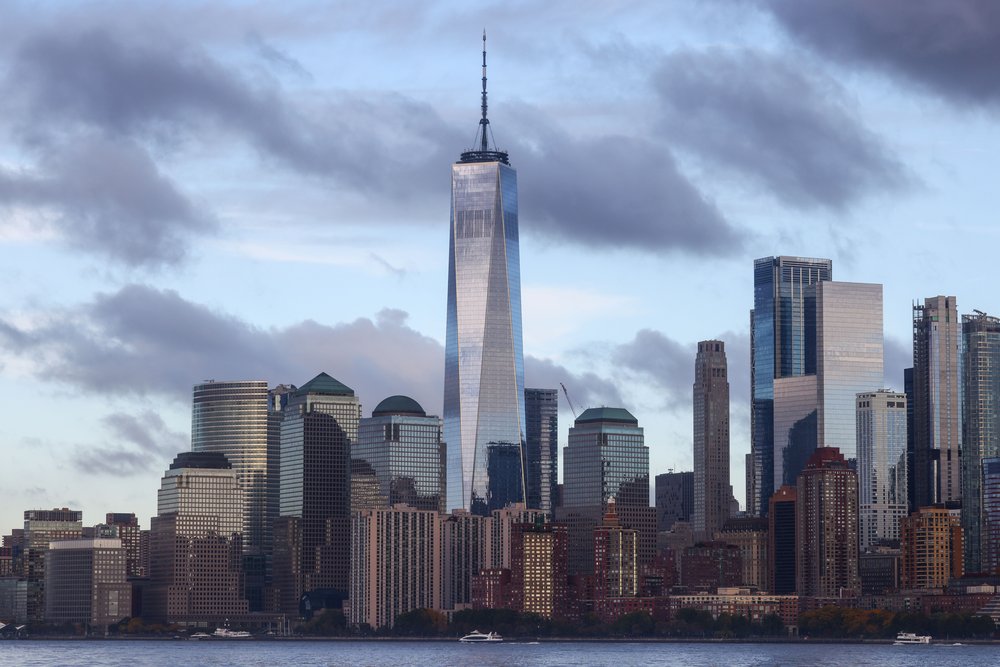
This appears to be the same thinking behind proposals contained in the report issued by Hochul and Adams. The proposals include updating regulations so that office conversions can take place more rapidly in Midtown, with the objective of ultimately making it more of a “live-work-play” neighborhood that includes affordable housing.
The report additionally calls for more flexibility in the kinds of businesses that can operate in commercial sectors in a “post-pandemic city.” But it also notes that “an overwhelming number” of workers “are deciding not to make the daily trek into the office,” and that policymakers need to “reimagine” Midtown.
“The sleek but anonymous streets that empty out every night and weekend lack the life, interest, energy, and beauty that brought many to New York in the first place,” it reads. “In this new world of choice for many employers and businesses, we need to entice people to come by creating a place they want to be.”
Coming to New York
For some experts, the potential to draw people back to the streets of the city is what prevents them from signing on to predictions heralding the end of New York.
“I am not team doom loop,” said Loh, laughing. “I think that there is an enduring value to both in-person work and to downtowns as central, highly accessible locations.”
“People want to be together,” said Loh.

Asylum-seekers have been flooding New York since the spring, with the vast majority coming from Central and South America. Most were put on buses dispatched to New York and other northern cities after crossing the southern border.
And Lander, the city comptroller, pointed to two seemingly disparate trends that together gave him optimism about the long-term allure of New York.
“During the pandemic, Google opened it up so that their employees could move to any city that Google had a footprint. And they wound up net more than a thousand employees in New York. Those weren't new hires,” Lander said. “Those were people who already worked for Google, who decided to move here from somewhere else. And so something is signaled there.”
At the same time, he noted, a surge of residents in the city’s homeless shelters occurred in part because “a set of people walked across the continent to escape desperation, war and poverty,” and that many of them headed to the five boroughs. He refers to an influx of asylum-seekers, mostly people who crossed the southern border and rode buses to New York.
“Maybe the kids of those Google engineers and the kids of those asylum-seekers from Venezuela will wind up in the same pre-K class, in a Manhattan public school,” said Lander. “And that's the future of New York.”